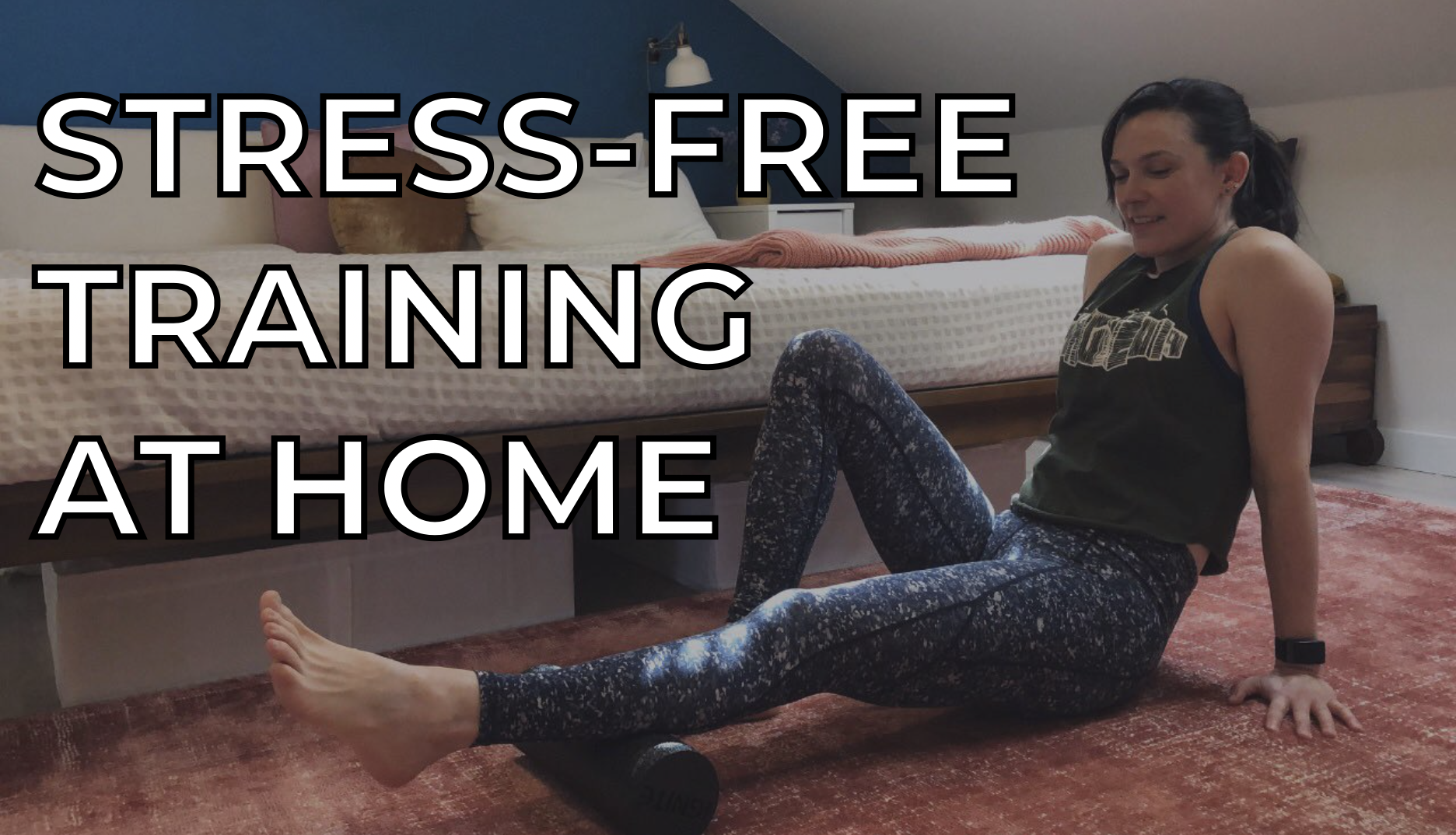Stress-Free Training at Home
If you’re struggling to work out at home, you’re not alone. Many of us need movement, play, and exercise to stay mentally and physically healthy. Losing access to that can be incredibly stressful.
I’ve been training at home for years. I’ve had many challenges, like having a baby or dealing with a health crisis. The Covid-19 outbreak is an enormous new challenge, but many of the habits I’ve built up over the years are adaptable to this new situation.
Here are six important tips for getting started and staying motivated in your home movement practice.
Make It Play
First and foremost, take the pressure off yourself. There are enough things to stress out about right now. Exercise should not be one of them. If you only know exercise as competitive, achievement-oriented, or shame-inducing, now is a great time to reevaluate.
Next time you feel stressed or demotivated, try asking yourself, “How would I enjoy moving right now?”
Focusing on playful or fun movement can reduce your stress. If you’re an active person, you probably already know how to move in ways you enjoy. But with the shutdown, you may need to adjust. Do you have a jump rope? Do you like calisthenics or bodyweight training? Yoga?
Think about how to make your home workouts interesting. Would you like to have a routine? New variations? New activities altogether? Music might help. Can you train with someone you live with? Boredom can fuel creativity. Go with it.
Anything that keeps you moving is a win. Even if that means enjoying simple things like dancing, chasing your kid around, roughhousing, or yard work. If you can get moving from a place of joy, chances are you will want to continue.
Finding Space and Creating Ritual
Home training may be drastically different from what you’re used to. It can be hard to look at your space and feel inspired to move. There may be furniture in the way or other people around. You may not have the equipment you’re used to. Your daily routine may be in shambles.
I’ve found it helps to create a ritual. Your ritual could be as simple as putting on shorts and moving the coffee table. If you have home equipment, you can set it up as part of your ritual.
Ritual cues your brain to enter the mindset for the activity you’d like to do. This eases your mental load. Some days I only commit myself to doing the ritual (putting on my shorts and moving the coffee table). Once I’ve done that, I will usually begin a workout. And once I begin, I’ll usually complete some or all of it.
Right now, I count that as a win.
If you have roommates or family to navigate around, it might help to ask for space and set expectations. “Can I use the living room for 30 minutes for my workout?” With children, you may need to be very specific. “Please don’t interrupt until I finish, and then we’ll have a snack afterward.”
When that doesn’t work, I take advantage of quiet times in the house. Early morning, late at night, or whenever it happens to be calm(er). It’s frustrating to try to work out in a busy house, but it might be worth the effort if it overall improves your mental health. And with time, it becomes a habit.
Find Comfort in the Basics
The first thing I did when the shutdown was announced (after a few days of feeling scared, angry, and frustrated) was a lot of pushups. I didn’t have any weights at home, so I returned to my bodyweight training basics. Not everyone loves pushups, but for me, they are like comfort food.
Start with what you know. Pushups, squats, and core exercises like planks require no equipment. There are always more difficult variations if you get bored (and easier variations, too).
Don’t forget mobility and stretching, which feel great in the body. If you’re not sure where to begin, search “beginner mobility” or “parkour mobility” on YouTube.
Indoor cardio training can be a little tricky, but worth it for the mental and physical health benefits. Try jump rope or stairs, if you have them. Or try a high-intensity interval workout (search “HIIT” on YouTube). If you can get outside, running is an amazing workout and a great stress-reliever. For parkour practitioners, quadrupedal movement and plyometrics are easy to practice at home.
Try Something New
Since there’s nowhere to go and no pressure to achieve anything, why not try that skill you’ve always been curious about? These could be inversions like handstands and bridges, MovNat and other ground-based movement practices, new variations on strength training exercises, or new movement styles altogether. YouTube is overflowing with ideas. Do what you need to keep moving.
Listen to Your Body
I know firsthand that stress can lead to fatigue, funky body pains, and injury. Pay attention to how you’re feeling before, during, and after workouts, and make adjustments. Expect to be out of practice and have increased soreness if you’ve taken some time off.
Trying new things? Beware of overuse injuries. I find them especially common with running and higher impact activities, but any new activity can cause injury if you overdo it.
Connect with Friends
Lastly, make sure to maintain connections with friends. You can always share your struggles and triumphs on social media. I also like to connect one-on-one with friends by sharing what I’m working on, asking questions, and thanking them directly for any way they’ve inspired me lately. You can also join PKV Online and share your ideas, movement, and struggles via the discussion classrooms!
So those are my six tips. Remember to have fun! And if you miss a workout, you always get another chance tomorrow.
About the Author
Rebecca writes stories about fitness and culture. She’s been training parkour since 2017 and playing with movement her whole life. @rebeccabrightly


